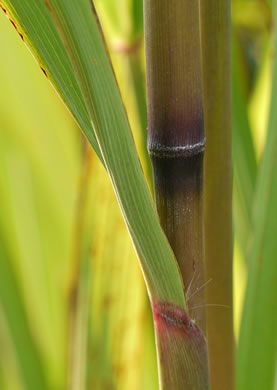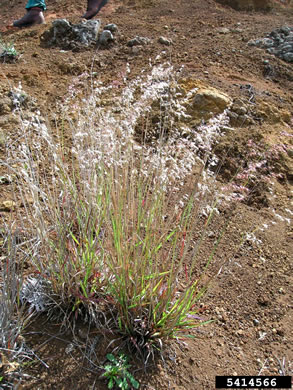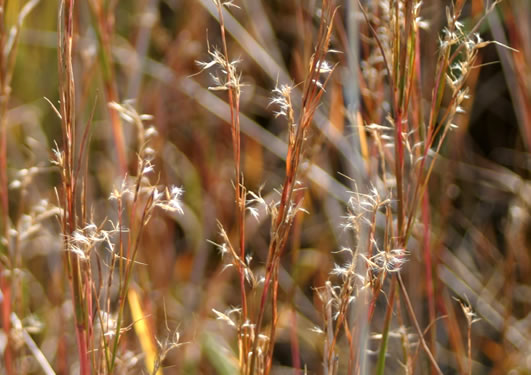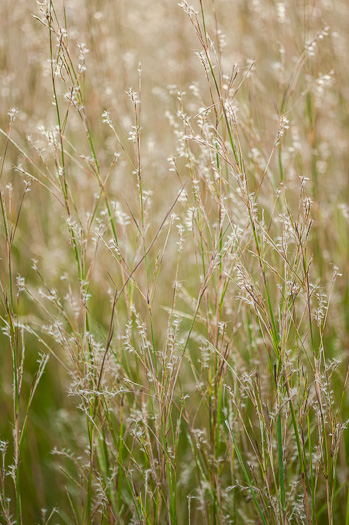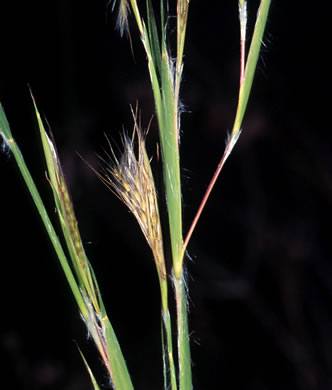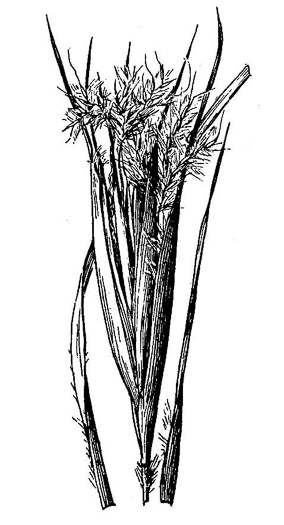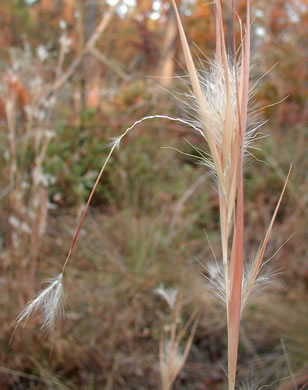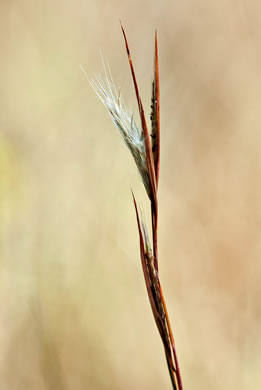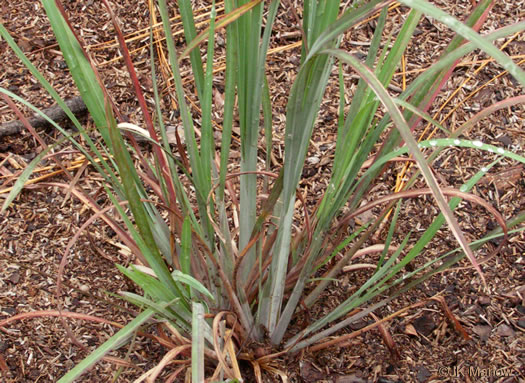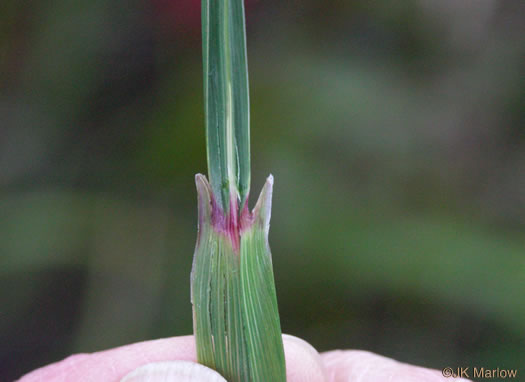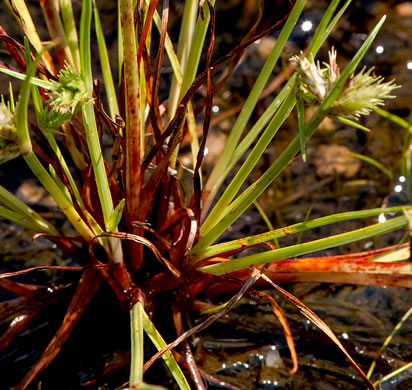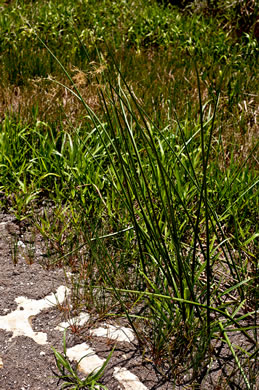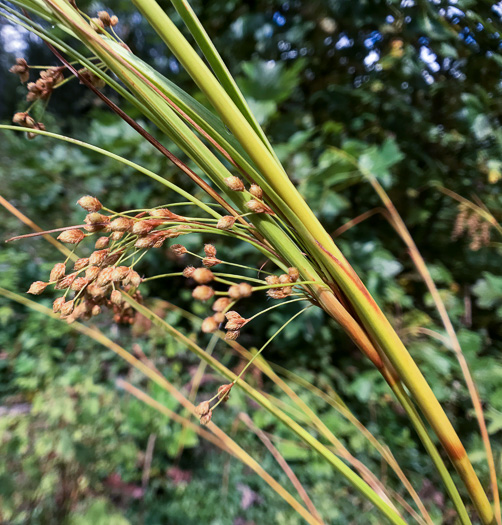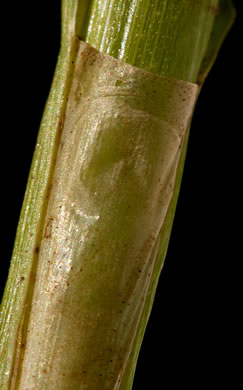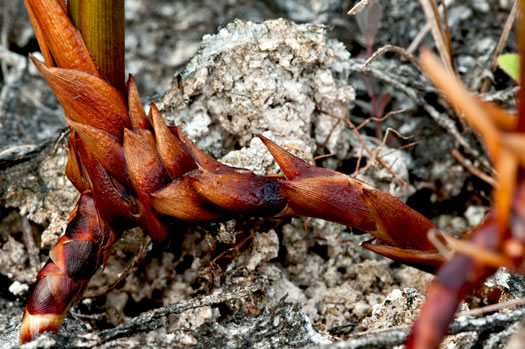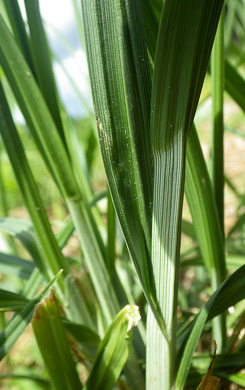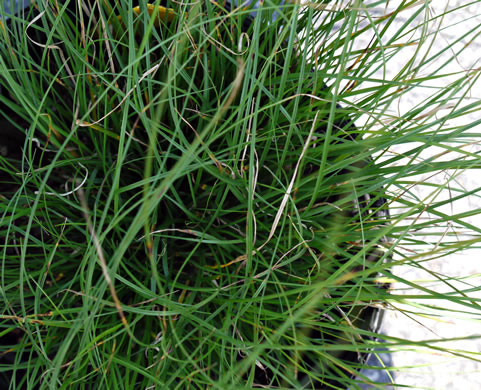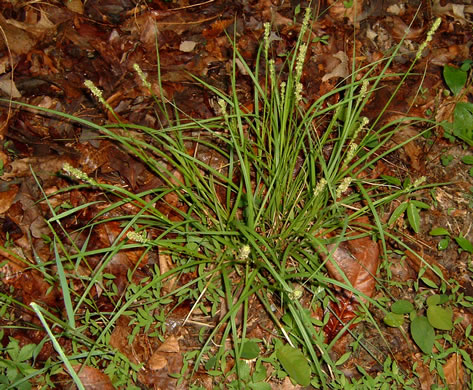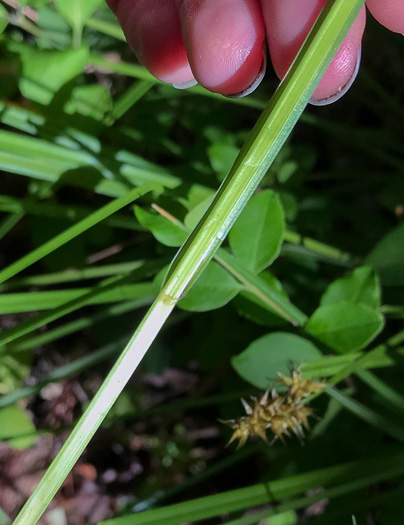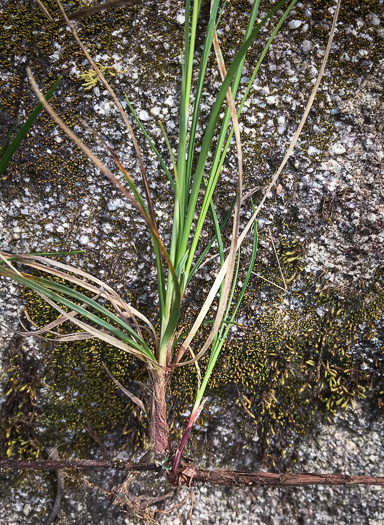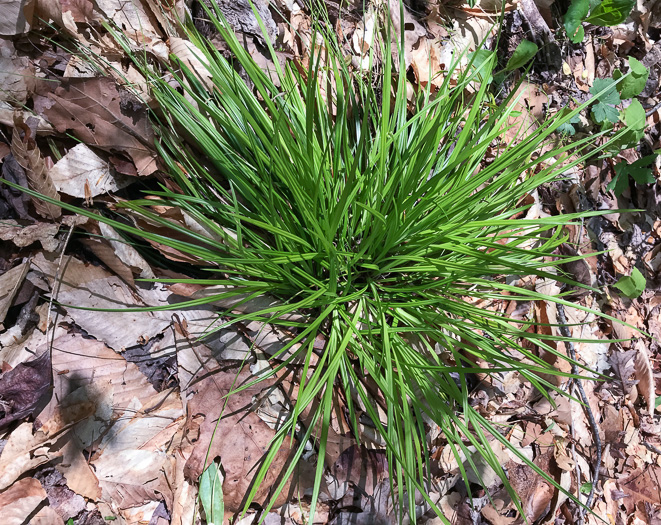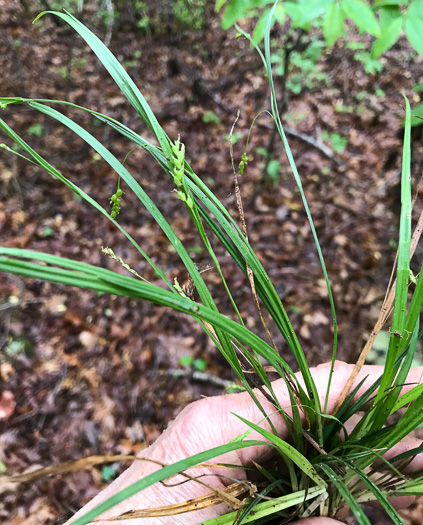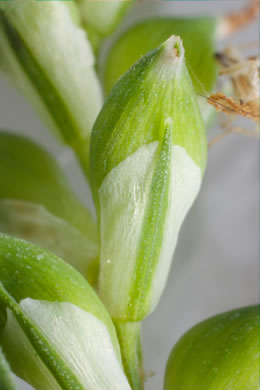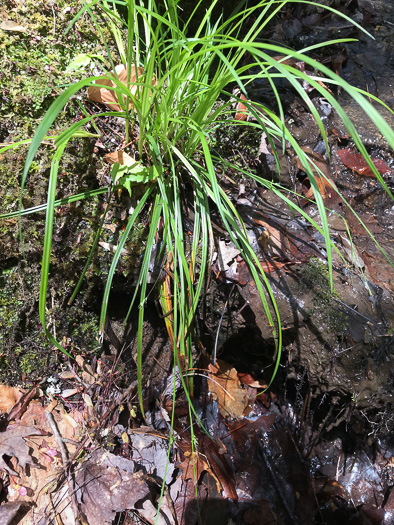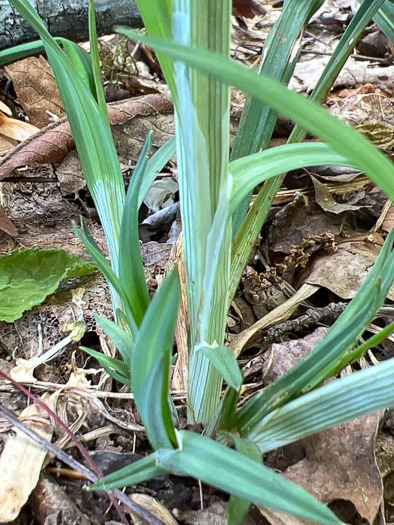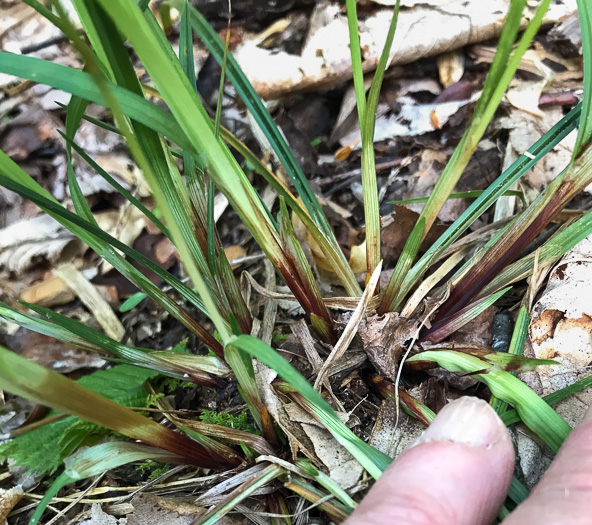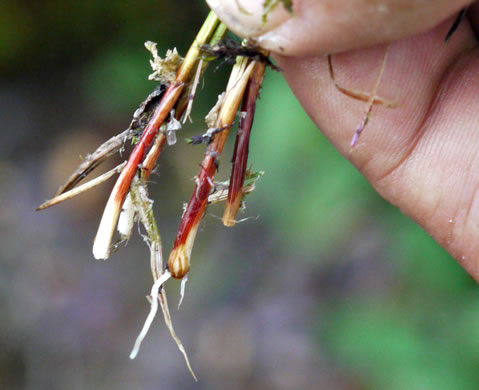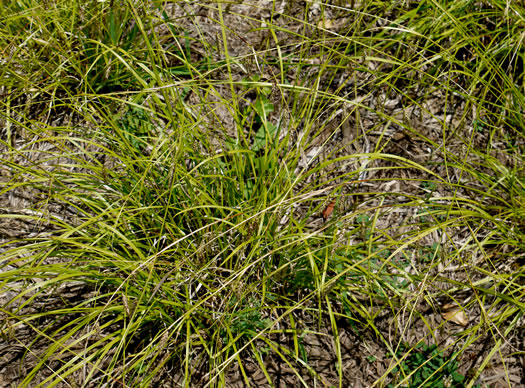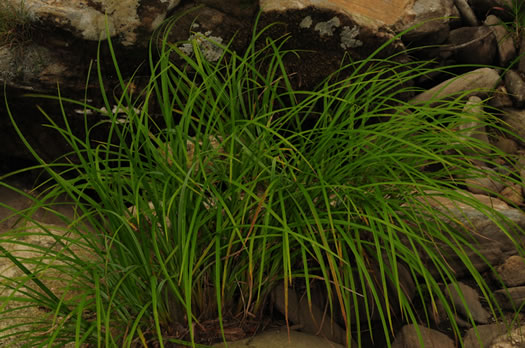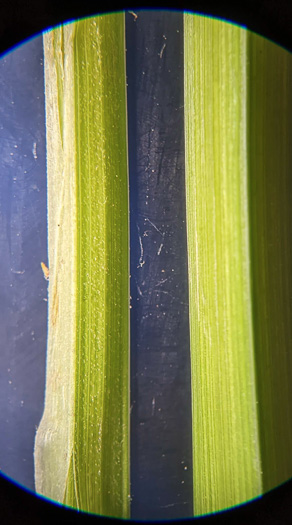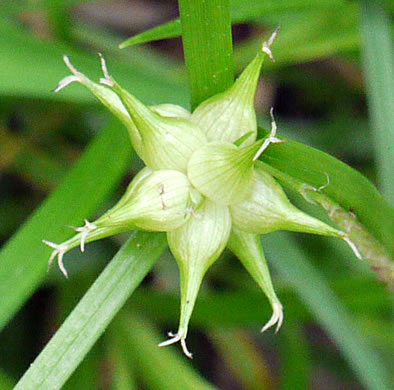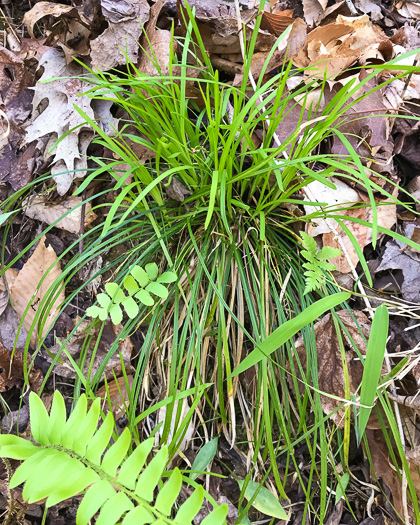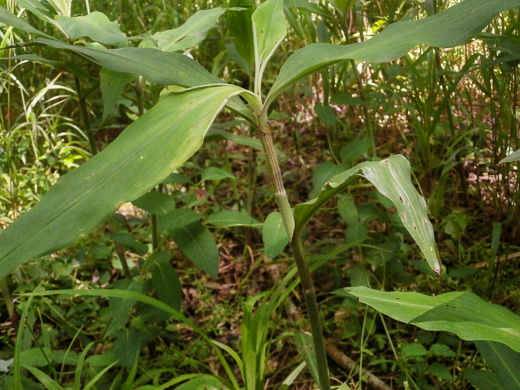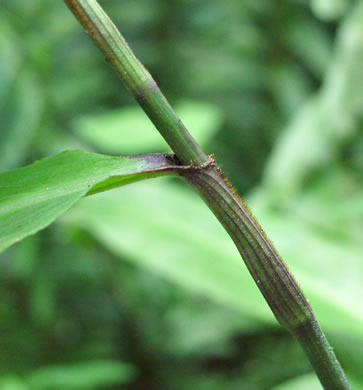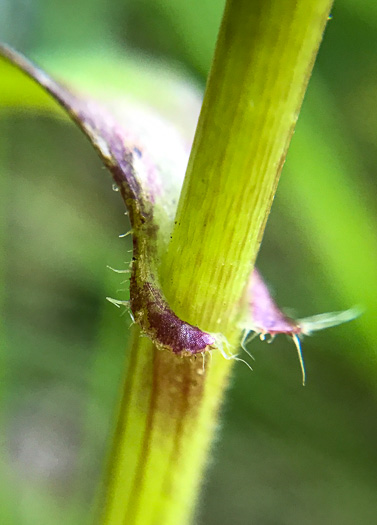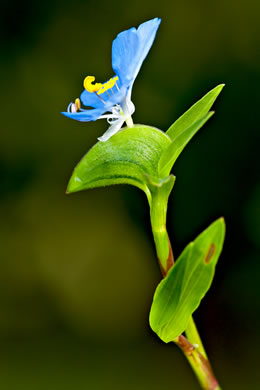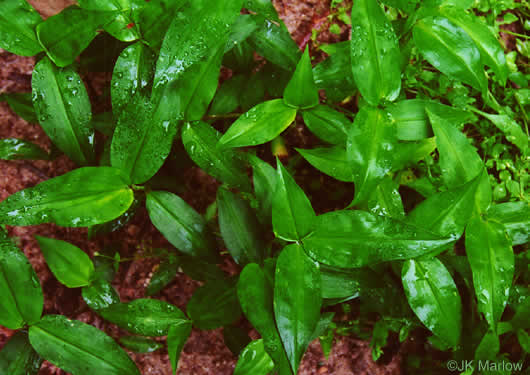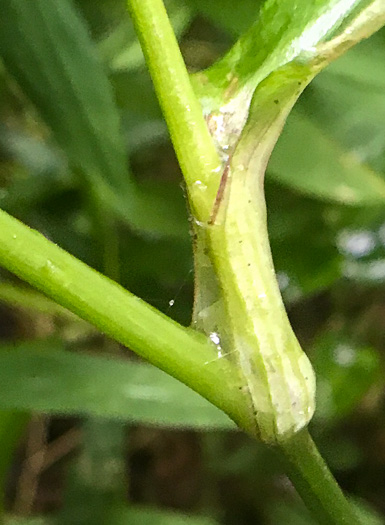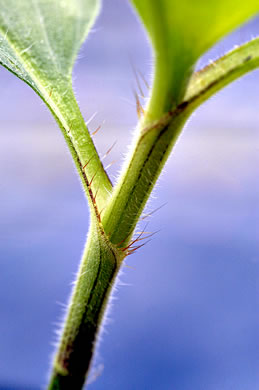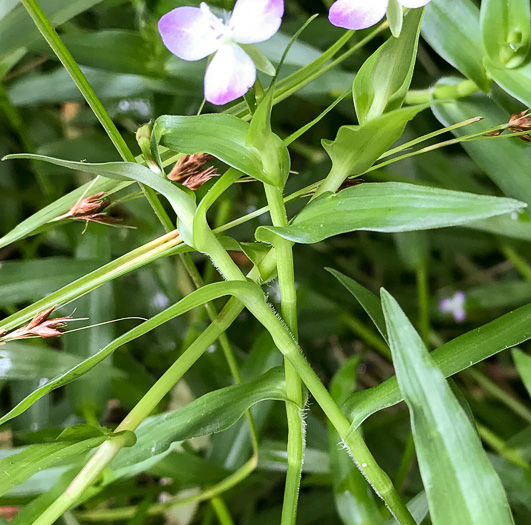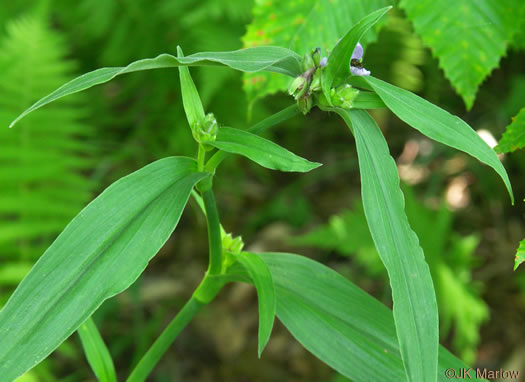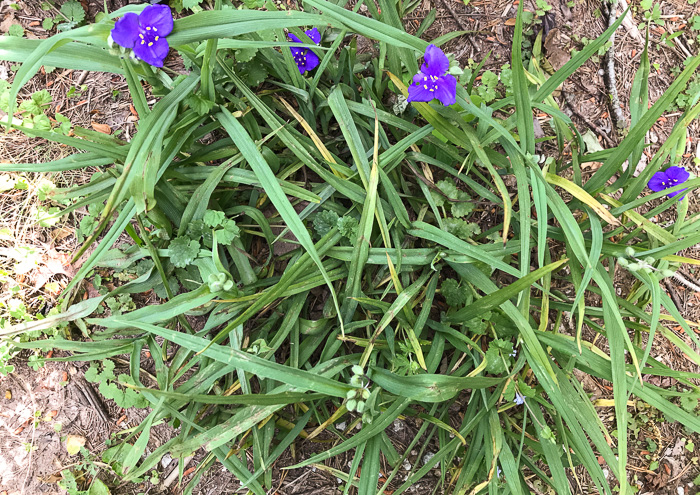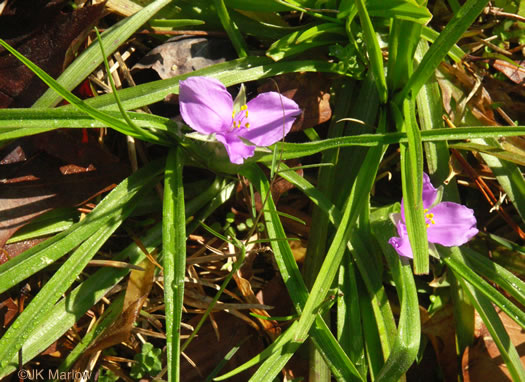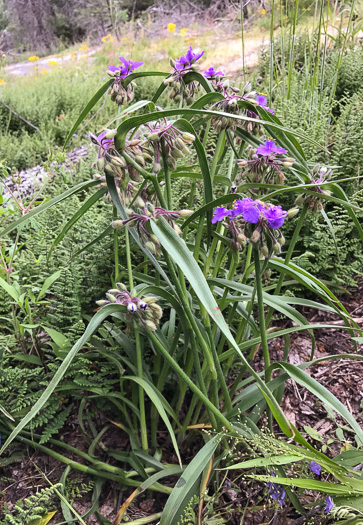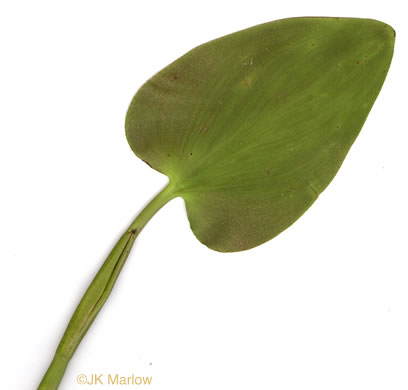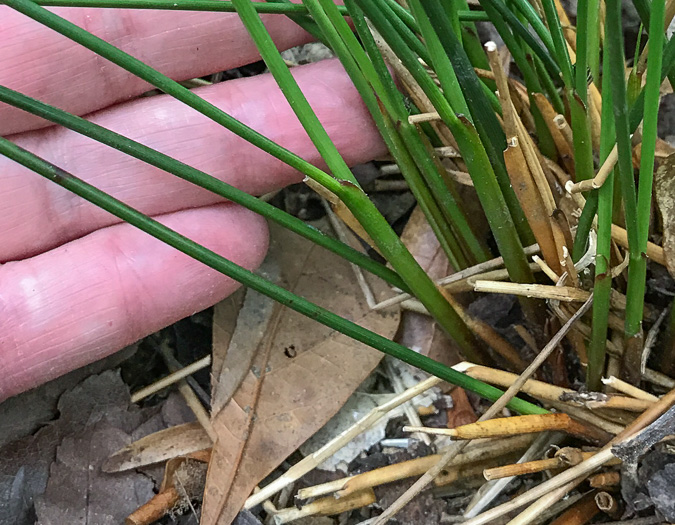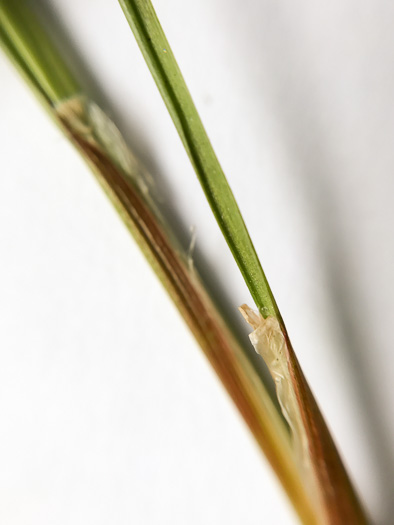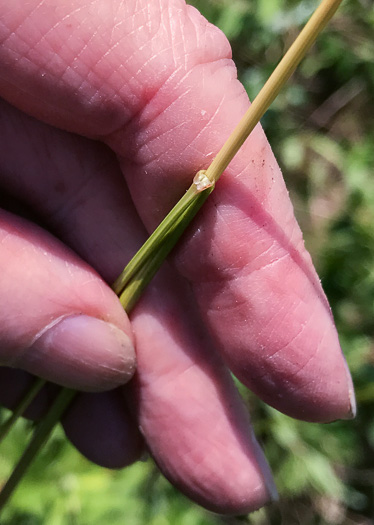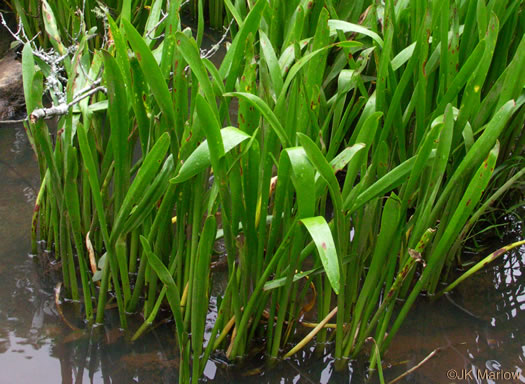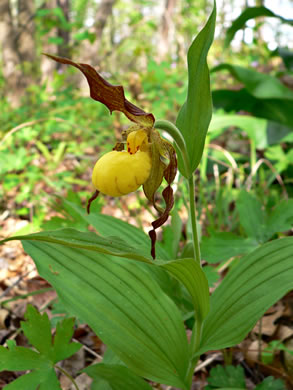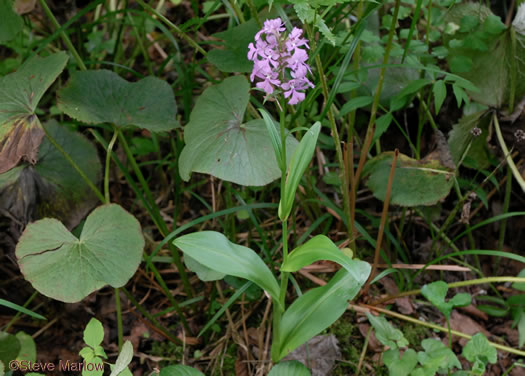Your search found 136 image(s) illustrating the term "sheath." For a written explanation, click on "sheath" in the Glossary.
To see larger pictures, click or hover over the thumbnails.
To go to the plant's detail page, click its name.
 Bent-awn Plumegrass,
Erianthus contortus
Bent-awn Plumegrass,
Erianthus contortus
Sheaths sparsely pilose at summit or glabrous, per Manual of the Grasses of the United States (Hitchcock & Chase, 1950).
 Rose Natalgrass,
Melinis repens ssp. repens
Rose Natalgrass,
Melinis repens ssp. repens
Leaf sheaths loose; leaf blades linear, to 20 x 0.2-1.4cm, per Flora of China.
 Common Little Bluestem,
Schizachyrium scoparium
Common Little Bluestem,
Schizachyrium scoparium
The filiform peduncles are mostly wholly or partly included in the sheaths, per Manual of the Grasses of the United States (Hitchcock & Chase, 1950).
 Creeping Bluestem,
Schizachyrium stoloniferum
Creeping Bluestem,
Schizachyrium stoloniferum
Raceme 2-3cm long, strongly flexuous, partly enclosed or exserted from sheath, per Manual of the Grasses of the United States (Hitchcock & Chase, 1950).
 Mohr's Bluestem,
Anatherum mohrii
Mohr's Bluestem,
Anatherum mohrii
Peduncles inserted, 2cm or less long; sheaths inflated, usually overlapping, per Vascular Flora of the Carolinas (Radford, Ahles, & Bell, 1968).
 Elliott's Bluestem,
Anatherum gyrans
Elliott's Bluestem,
Anatherum gyrans
Elongate stem sheaths overlap and hide most of the inflorescence (until late in the season), per Vascular Plants of North Carolina.
 Elliott's Bluestem,
Anatherum gyrans
Elliott's Bluestem,
Anatherum gyrans
Raceme clusters clasped by leaflike bracts, these clasped by leaf sheaths, per Wildflowers of the Eastern United States (Duncan & Duncan, 1999).
 Broomsedge,
Anatherum virginicum var. virginicum
Broomsedge,
Anatherum virginicum var. virginicum
Sheaths glabrous or more or less pilose along margins, occ conspicuously so, per Manual of the Grasses of the United States (Hitchcock & Chase, 1950).
 Longbeard Bluestem,
Anatherum longiberbe
Longbeard Bluestem,
Anatherum longiberbe
The bases of the racemes not exserted above the apex of the raceme sheath, per Weakley's Flora (2012).
 Dryland White Bluestem,
Anatherum capillipes
Dryland White Bluestem,
Anatherum capillipes
Culm sheaths & leaf blades of Andropogon capillipes, A. dealbatus & A. cretaceus strongly glaucous, per Weakley's Flora (2025).
 Yellow Indiangrass,
Sorghastrum nutans
Yellow Indiangrass,
Sorghastrum nutans
Note auricled sheaths and narrow flat blades, per Manual of the Grasses of the United States (Hitchcock & Chase, 1950).
 Granite Flatsedge,
Cyperus granitophilus
Granite Flatsedge,
Cyperus granitophilus
Leaf blades strongly keeled, sheaths reddish, per Vascular Flora of the Carolinas (Radford, Ahles, & Bell, 1968).
 jointed flatsedge,
Cyperus articulatus
jointed flatsedge,
Cyperus articulatus
Blades flattish, absent or to 2cm long; leaves usually just a loose sheath, per Vascular Flora of the Carolinas (Radford, Ahles, & Bell, 1968).
 Woodland Bulrush,
Scirpus expansus
Woodland Bulrush,
Scirpus expansus
Leaf sheaths of lower leaves are red and give the stem a red-banded look, per Vascular Plants of North Carolina.
 Woodland Bulrush,
Scirpus expansus
Woodland Bulrush,
Scirpus expansus
Leaf blades septate, to 6dm long, 6-20mm wide; sheaths purplish, per Vascular Flora of the Carolinas (Radford, Ahles, & Bell, 1968).
 Leafy Bulrush,
Scirpus polyphyllus
Leafy Bulrush,
Scirpus polyphyllus
The ventral surface of the sheath is purple-spotted, per Vascular Flora of the Carolinas (Radford, Ahles, & Bell, 1968).
 Sawgrass,
Cladium jamaicense
Sawgrass,
Cladium jamaicense
Stolons about 1cm in diameter sheathed by scalelike leaves 1.5-2cm long, per Aquatic and Wetland Plants of Southeastern United States (Godfrey & Wooten, 1979 & 1981).
 Heavy Sedge,
Carex gravida
Heavy Sedge,
Carex gravida
Leaf sheaths loose, backs striped with green and white (not white-spotted), per Weakley's Flora (2015).
 Appalachian Sedge,
Carex appalachica
Appalachian Sedge,
Carex appalachica
Leaf blades 0.5-2.5mm wide, sheaths tight, per Vascular Flora of the Carolinas (Radford, Ahles, & Bell, 1968).
 Yellow-fruited Sedge,
Carex annectens
Yellow-fruited Sedge,
Carex annectens
Leaf blades shorter than flowering stem, sheath fronts indistinctly spotted, per Flora of North America.
 Smooth-sheath Sedge,
Carex laevivaginata
Smooth-sheath Sedge,
Carex laevivaginata
The leaf sheath's thickened cartilaginous summit can be felt by one's finger as a distinct bump, per Vascular Plants of North Carolina.
 Pennsylvania Sedge,
Carex pensylvanica
Pennsylvania Sedge,
Carex pensylvanica
Bases wrapped in a red sheath that splits and has thread-like fibers along edges (“fibrillose”), per www.minnesotawildflowers.info.
 South Carolina Sedge,
Carex austrocaroliniana
South Carolina Sedge,
Carex austrocaroliniana
Leaves: basal sheaths purple; blades erect, ascending, or decumbent, green, per Flora of North America.
 Slender Woodland Sedge,
Carex digitalis +
Slender Woodland Sedge,
Carex digitalis +
Basal sheaths brownish, lacking any purple coloration, per Weakley's Flora (2025).
 Lined Sedge,
Carex striatula
Lined Sedge,
Carex striatula
Perigynia (papery sheath enveloping nutlet) strongly nerved, whitish, fusiform, per Vascular Flora of the Carolinas (Radford, Ahles, & Bell, 1968).
 Bent Sedge,
Carex styloflexa
Bent Sedge,
Carex styloflexa
Basal sheaths brown, not purple or wine-red, per Weakley's Flora (2022).
 Radford's Sedge,
Carex radfordii
Radford's Sedge,
Carex radfordii
Basal leaf sheaths pale and striped.
 Blue Ridge Purple Sedge,
Carex manhartii
Blue Ridge Purple Sedge,
Carex manhartii
Basal sheaths reddish purple, lustrous; sheaths 5-40 mm; blades green, midrib well developed, per Flora of North America.
 Wretched Sedge,
Carex misera
Wretched Sedge,
Carex misera
A softly hairy, purplish, basal sheath encircles the stem, per Field Guide to the Rare Plants of Georgia (Chafin, 2007).
 Cherokee Sedge,
Carex cherokeensis
Cherokee Sedge,
Carex cherokeensis
Leaf blades 4-5mm wide; sheaths brownish, glabrous, per Vascular Flora of the Carolinas (Radford, Ahles, & Bell, 1968).
 Twisted Sedge,
Carex torta
Twisted Sedge,
Carex torta
Clump-forming perennial w flat grass-like leaves, reddish-brown basal sheath, per Wildflowers & Plant Communities of the Southern Appalachian Mountains and Piedmont (Spira, 2011).
 Long-fringed Sedge,
Carex crinita var. crinita
Long-fringed Sedge,
Carex crinita var. crinita
Sheath backs scabrous - C. mitchelliana (on left); vs. glabrous - C. crinita (on right), per Weakley's Flora (2022).
 Mitchell's Sedge,
Carex mitchelliana
Mitchell's Sedge,
Carex mitchelliana
Sheath backs scabrous - C. mitchelliana (on left); vs. glabrous - C. crinita (on right), per Weakley's Flora (2022).
 Bladder Sedge,
Carex intumescens var. intumescens
Bladder Sedge,
Carex intumescens var. intumescens
Perigynium [papery sheath enveloping nutlet] nerved, lustrous, w rounded base, per Vascular Flora of the Carolinas (Radford, Ahles, & Bell, 1968).
 Longstalk Sedge,
Carex pedunculata
Longstalk Sedge,
Carex pedunculata
Leaves: basal sheaths dark reddish to purplish brown; blades mostly basal, dark green, per Flora of North America.
 Green Arrow-arum,
Peltandra virginica
Green Arrow-arum,
Peltandra virginica
The spadix is enclosed within a green sheathlike envelope (spathe), per Wildflowers of the Sandhills Region (Sorrie, 2011).
 Shortleaf Yellow-eyed-grass,
Xyris brevifolia
Shortleaf Yellow-eyed-grass,
Xyris brevifolia
Leaves linear; shorter than, equaling or slightly exceeding the scape's sheath, per Weakley's Flora.
 Virginia Dayflower,
Commelina virginica
Virginia Dayflower,
Commelina virginica
Leaves lanceolate, 4-8" long, 1-2" wide, leaf bases sheathing the stem, per Wildflowers of Tennessee, the Ohio Valley, and the Southern Appalachians (Horn, Cathcart, Hemmerly, & Duhl, 2005).
 Virginia Dayflower,
Commelina virginica
Virginia Dayflower,
Commelina virginica
Sheath margins noticeably hairy with coarse reddish hairs, per Wildflowers of Tennessee, the Ohio Valley, and the Southern Appalachians (Horn, Cathcart, Hemmerly, & Duhl, 2005).
 Erect Dayflower,
Commelina erecta var. erecta
Erect Dayflower,
Commelina erecta var. erecta
Leaves narrow, 2-6" long, with a white hairy sheath around stem, per Wildflowers of Tennessee (Carman, 2005).
 Erect Dayflower,
Commelina erecta var. erecta
Erect Dayflower,
Commelina erecta var. erecta
Leaf sheaths prolonged upwards into auricles, ciliate with white hairs, per Weakley's Flora (2023).
 Sand Dayflower,
Commelina erecta var. angustifolia
Sand Dayflower,
Commelina erecta var. angustifolia
Flowers grow from within broad fused bracts (spathes) that sheath the stem, per Wildflowers of the Sandhills Region (Sorrie, 2011).
 Asiatic Dayflower,
Commelina communis
Asiatic Dayflower,
Commelina communis
Leaves lanceolate-ovate, 2-5" long, bases sheathing the stem, per Wildflowers of Tennessee, the Ohio Valley, and the Southern Appalachians (Horn, Cathcart, Hemmerly, & Duhl, 2005).
 Asiatic Dayflower,
Commelina communis
Asiatic Dayflower,
Commelina communis
Leaves with tubular sheaths that are 0.7-2.5cm long and have ciliate margins, per Vascular Flora of the Carolinas (Radford, Ahles, & Bell, 1968).
 Tropical Spiderwort,
Commelina benghalensis
Tropical Spiderwort,
Commelina benghalensis
Leaf sheaths ciliate w coarse reddish-brown hairs, the sheath not auriculate, per Weakley's Flora (2015).
 Murdannia,
Murdannia keisak
Murdannia,
Murdannia keisak
Leaves 1-7cm long, 3-12mm wide, sheaths 5-15mm long and ciliate, per Vascular Flora of the Carolinas (Radford, Ahles, & Bell, 1968).
 Murdannia,
Murdannia keisak
Murdannia,
Murdannia keisak
Plants resembling Commelina but flowers not borne in a conspicuous sheath, per Wildflowers of the Eastern United States (Duncan & Duncan, 1999).
 Zigzag Spiderwort,
Tradescantia subaspera
Zigzag Spiderwort,
Tradescantia subaspera
Leaves 0.6-4.5cm wide (upper leaf blades wider than opened flattened sheath), per Vascular Flora of the Carolinas (Radford, Ahles, & Bell, 1968).
 Virginia Spiderwort,
Tradescantia virginiana
Virginia Spiderwort,
Tradescantia virginiana
Leaves 15-35cm long, 5-12mm wide (narrower than opened flattened sheath), per Vascular Flora of the Carolinas (Radford, Ahles, & Bell, 1968).
 Hairy Spiderwort,
Tradescantia hirsutiflora
Hairy Spiderwort,
Tradescantia hirsutiflora
Leaf blades of upper leaves are not constricted to a subpetiolar sheath, per Weakley's Flora.
 Hairy Spiderwort,
Tradescantia hirsuticaulis
Hairy Spiderwort,
Tradescantia hirsuticaulis
Leaves 7-25cm long, 5-15mm wide (narrower than opened flattened sheath), per Vascular Flora of the Carolinas (Radford, Ahles, & Bell, 1968).
 Heartleaf Pickerelweed,
Pontederia cordata var. cordata
Heartleaf Pickerelweed,
Pontederia cordata var. cordata
Leaves basally sheathing, petiolate, and parallel curved-convergent veined, per Plant Systematics (Simpson, 2010).
 Leathery Rush,
Juncus coriaceus
Leathery Rush,
Juncus coriaceus
At least a few sheaths at base of plant with well developed blades, per Weakley's Flora (2020).
 Path Rush,
Juncus tenuis
Path Rush,
Juncus tenuis
The auricle at mouth of leaf sheath is pale and extends well past the mouth, per Vascular Plants of North Carolina.
 Forked Rush,
Juncus dichotomus
Forked Rush,
Juncus dichotomus
The auricle at the mouth of the leaf sheath is short (vs long in J. tenuis), per Vascular Plants of North Carolina.
 Summer Snowflake,
Leucojum aestivum
Summer Snowflake,
Leucojum aestivum
Leaves linear, 4-6dm long, surrounded at base by tubular sheaths, per Vascular Flora of the Carolinas (Radford, Ahles, & Bell, 1968).
 Rocky-shoals Spiderlily,
Hymenocallis coronaria
Rocky-shoals Spiderlily,
Hymenocallis coronaria
Leaves basal, linear, strap-like, surrounded at base by tubular sheaths, per Wildflowers of Tennessee, the Ohio Valley, and the Southern Appalachians (Horn, Cathcart, Hemmerly, & Duhl, 2005).
 Large Yellow Lady's Slipper,
Cypripedium parviflorum var. pubescens
Large Yellow Lady's Slipper,
Cypripedium parviflorum var. pubescens
3-5 leaves, mostly sheathed, widely spaced on the stem, pleated, hairy, per Wildflowers of Tennessee, the Ohio Valley, and the Southern Appalachians (Horn, Cathcart, Hemmerly, & Duhl, 2005).
 Small Yellow Lady's Slipper,
Cypripedium parviflorum var. parviflorum
Small Yellow Lady's Slipper,
Cypripedium parviflorum var. parviflorum
Leaves alternate, usually 3, mostly sheathing, pleated, hairy, per Wildflowers of Tennessee, the Ohio Valley, and the Southern Appalachians (Horn, Cathcart, Hemmerly, & Duhl, 2005).
 Large Purple Fringed Orchid,
Platanthera grandiflora
Large Purple Fringed Orchid,
Platanthera grandiflora
Leaves alternate, lanceolate, keeled, to 8" long, sheathing the lower stem, per Wildflowers of Tennessee, the Ohio Valley, and the Southern Appalachians (Horn, Cathcart, Hemmerly, & Duhl, 2005).

